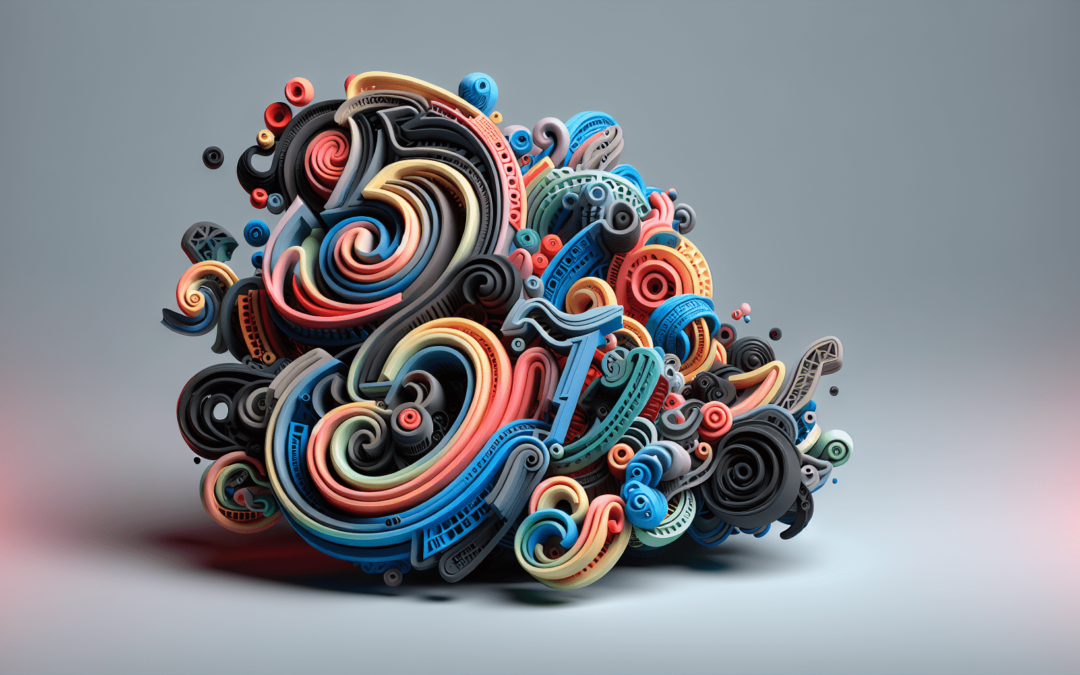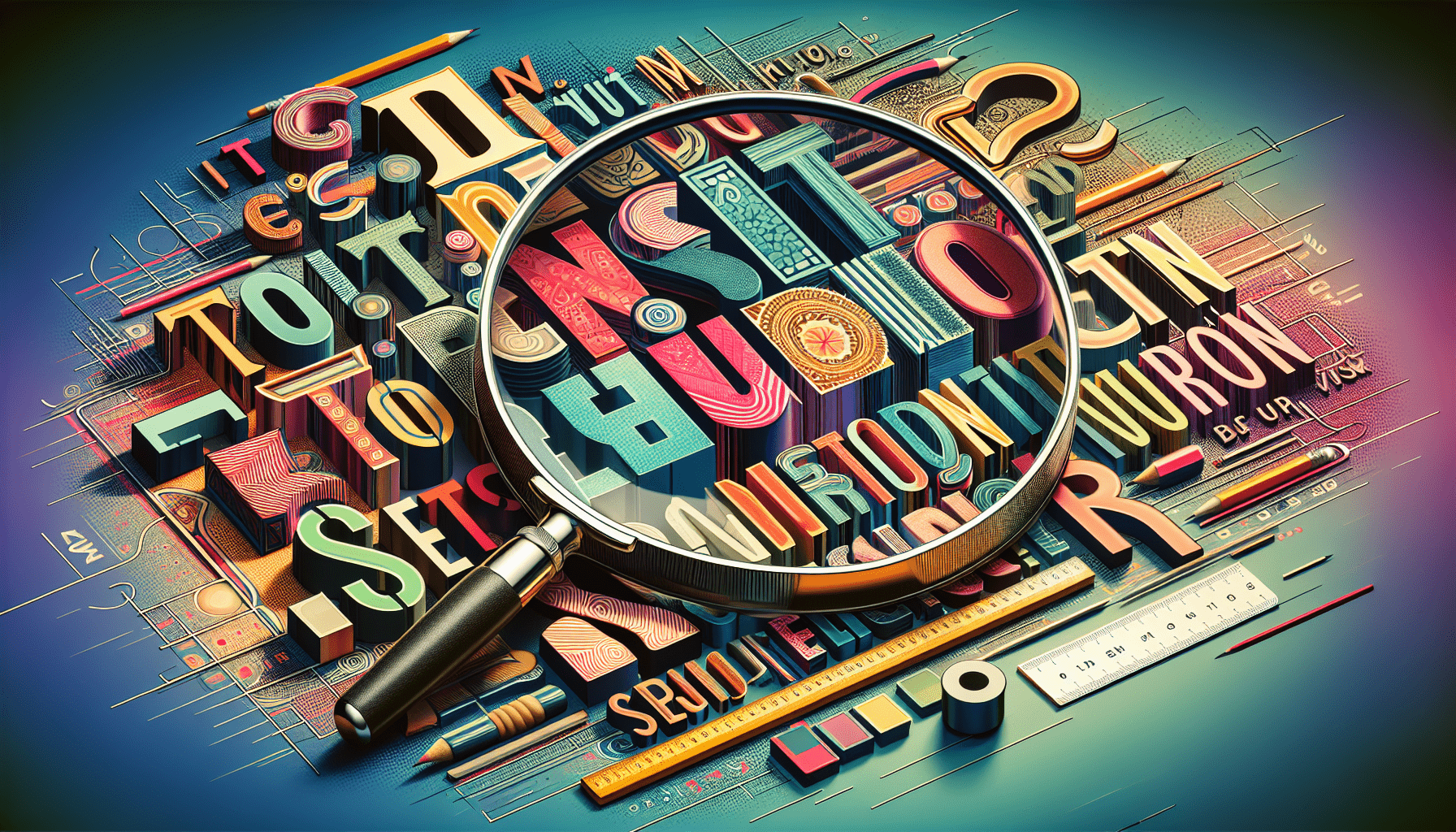The Future of Fonts:
Have you ever wondered what the future holds for fonts and typography? In a world constantly evolving due to technological advancements, the way we communicate visually is no exception. Join us as we explore the exciting possibilities and trends in futuristic fonts and typography.
What are Futuristic Fonts?
Futuristic fonts are typefaces that embrace forward-thinking design concepts and incorporate cutting-edge technologies to create visually striking and innovative typography. These fonts often push the boundaries of traditional design, utilizing unique shapes, styles, and structures to convey a sense of modernity and futurism.
So, what sets futuristic fonts apart from traditional ones? Imagine sleek, minimalist typefaces with geometric shapes, sharp angles, and unconventional spacing. These fonts are designed to capture the essence of technology, innovation, and progress, making them perfect for projects that require a contemporary and forward-looking aesthetic.
Characteristics of Futuristic Fonts
When it comes to futuristic fonts, there are several key characteristics that set them apart from traditional typefaces. Some of the most common features include:
- Geometric shapes and patterns – Slab Serif Fonts
- Minimalist design elements
- Sharp angles and unconventional spacing
- Experimental letterforms
- Use of advanced technologies like variable fonts
These characteristics work together to create a sense of innovation and modernity, making futuristic fonts ideal for projects that aim to stand out and make a bold statement.
Trends in Futuristic Typography
As we look ahead to the future of fonts, it’s important to consider the trends that are shaping the world of typography. From the rise of variable fonts to the growing influence of artificial intelligence, there are several key trends that are influencing the development of futuristic typography.
Variable Fonts
One of the most exciting developments in the world of typography is the rise of variable fonts. These fonts use a single file to store multiple variations of a typeface, allowing designers to customize everything from weight and width to slant and optical size. This flexibility makes variable fonts incredibly versatile and allows for a high level of customization in design projects.
Artificial Intelligence
Artificial intelligence is also playing a significant role in the future of typography. AI-powered tools are being used to analyze trends in typography, generate new font designs, and even customize typefaces based on user preferences. This technology has the potential to revolutionize the way we create and interact with fonts, opening up new possibilities for dynamic and responsive typography.
3D Typography
Another trend that is gaining popularity in futuristic typography is 3D design. By adding depth and dimension to typefaces, designers can create visually striking text that stands out on screens and in print. 3D typography adds a sense of realism and depth to fonts, making them feel more immersive and engaging.
The Impact of Technology on Fonts
Technology plays a crucial role in shaping the future of fonts and typography. Advancements in digital tools, software, and web technologies have revolutionized the way we create, share, and consume fonts. Let’s take a closer look at the impact of technology on the world of typography.
Digital Font Creation
Digital tools and software have made it easier than ever for designers to create custom fonts. With the rise of vector-based software like Adobe Illustrator and Glyphs, designers can easily design, refine, and export fonts for both print and digital projects. This accessibility has led to a surge in the number of unique and innovative typefaces available to designers.
Web Fonts and Responsive Design
With the increasing popularity of web design and digital media, web fonts have become a crucial part of the typography landscape. Web fonts allow designers to use custom typefaces on websites, ensuring a consistent and visually appealing experience across different devices and screen sizes. Responsive design techniques also play a key role in ensuring that fonts adapt to various screen sizes and orientations, making typography more flexible and dynamic.
Mobile Typography
As mobile devices continue to dominate the way we consume content, mobile typography has become a hot topic in the design world. Designers must consider factors like screen size, legibility, and readability when designing fonts for mobile devices. Mobile typography trends often focus on creating clear, concise, and visually appealing text that enhances the user experience on smartphones and tablets.
The Future of Fonts in Design
As we look to the future, the role of fonts in design will continue to evolve and adapt to the changing needs of users and creators. From dynamic and interactive typography to AI-generated typefaces, the possibilities are endless when it comes to the future of fonts.
Dynamic and Interactive Typography
Dynamic typography is a trend that is gaining traction in the design world. By adding interactive elements to text, designers can create engaging and immersive experiences for users. Whether it’s animated text, responsive type, or interactive fonts, dynamic typography allows for a more dynamic and engaging user experience.
AI-Generated Typefaces
As artificial intelligence continues to advance, we can expect to see more AI-generated typefaces in the future. These typefaces are created using machine learning algorithms that analyze fonts, styles, and trends to generate new and innovative designs. AI-generated typefaces have the potential to revolutionize the way we create and use fonts, providing designers with a virtually limitless array of options to choose from.
Customizable Fonts
Customizable fonts are also on the rise, allowing designers to tweak and adjust typefaces to suit their specific needs. Variable fonts, in particular, offer a high level of customization by allowing designers to modify weight, width, slant, and other characteristics of a typeface. This flexibility opens up new possibilities for creativity and personalization in design projects.
Conclusion
The future of fonts is filled with exciting possibilities and trends that are reshaping the way we communicate visually. From futuristic typefaces to dynamic and interactive typography, the world of font design is evolving at a rapid pace. By embracing these trends and technologies, designers can create unique and innovative typography that pushes the boundaries of traditional design. So, as you look ahead to the future of fonts, remember to stay curious, creative, and open to the endless possibilities that lie ahead.
Questions? Contact the Kirkgroup today – 916.933.3275


